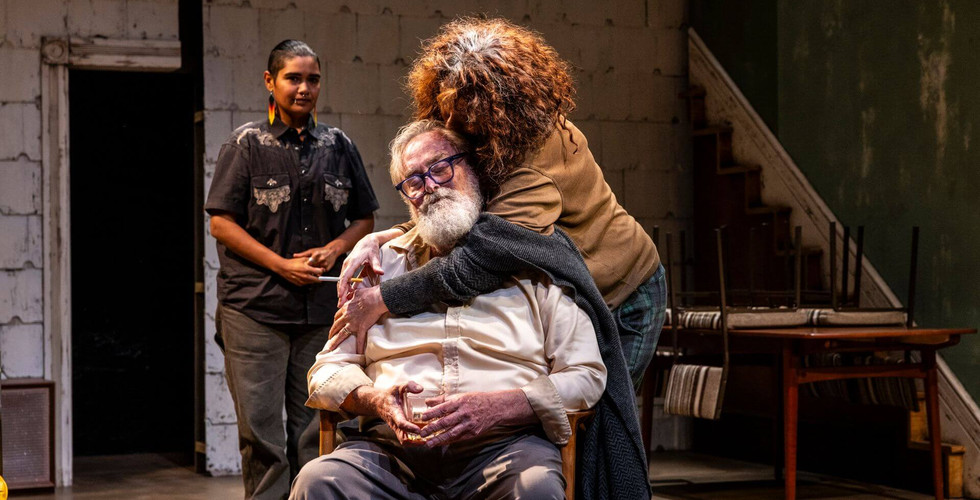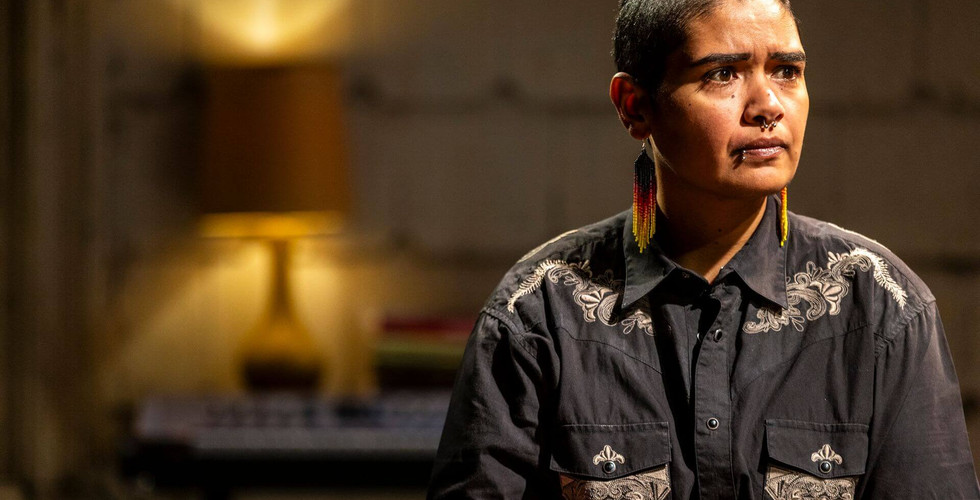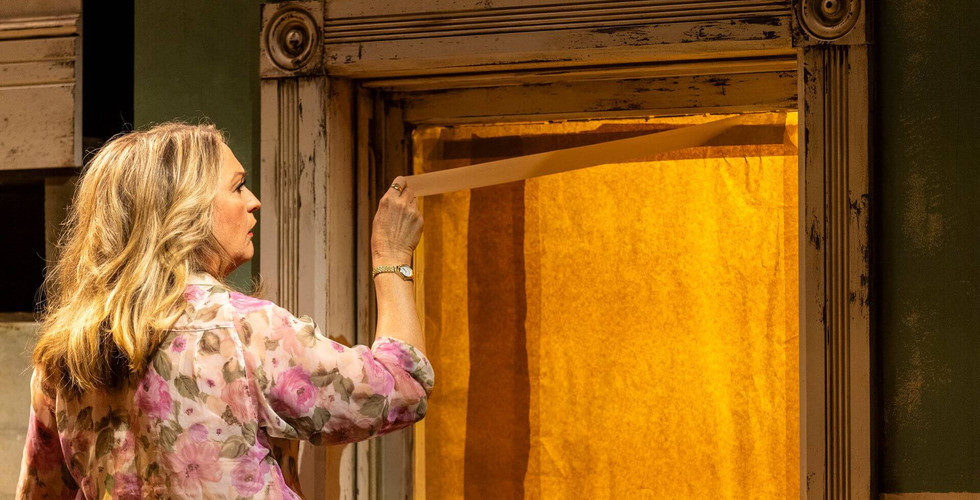August: Osage County - Belvoir St Theatre (NSW)
Written by Tracy Letts. Directed by Eamon Flack.
This is quintessential theatre viewing that is led through the chaos by a world-class ensemble
Reviewed by Claira Prider
Belvoir St Theatre, Surry Hills
Until 15th December, 2024
Set in 2007 in Pawhuska, Oklahoma, native to the people of the Osage nation, Pulitzer Prize winning tragicomedy August: Osage County presents a complex criticism of the modern American family. Written by Tracy Letts, the plot sees the fractured Weston family come together under the same roof for the first time in years after the disappearance of their family patriarch, Beverly. With his funeral behind them, disturbing family secrets come undone, and the temporarily reunited family unravel once again. Examining the intimate intricacies of human behaviour, much of the brilliance of the writing comes from Letts’ understanding of fraught family dynamics.
The work unfolds in a middle class, three-storey homestead, surrounded by hot, dusty plains. Challenged by the size constraints of Belvoir’s upstairs theatre, this production has adapted the playwright’s vision to fit the 330-seater space, making for an intensely intimate theatrical experience. In a pre-season briefing, lighting designer Morgan Moroney speaks of the challenges the creative team faced in wanting to create panoramic images that capture different fragments of the same fractured story in such a confined space. “By dissolving the walls, we’re allowing parts of the stage to exist in different time zones simultaneously” and this is achieved spectacularly well.
August: Osage County, Belvoir St (2024). Photography by Brett Boardman
The setting sees worn down outer walls of an unkempt weatherboard home, with interior two-dimensional wooden stairs flat against the back wall and brown paper covering all the doors and windows. Mismatched pieces of wooden and vinyl living room furniture line the walls along with a boxy tv on the floor, record player, sagging couch and a well-stocked drinks trolley.
With an ensemble of thirteen on stage, Eamon Flack’s precise direction ensures the busyness of the intertwining and concurrent storylines are followed amidst the chaotic nature of the work. Despite the depressing themes throughout, there are many moments of laughter, with a particularly hilarious scene that sees everyone sharing a meal together after Beverly's funeral. Seated on a combination of camping and dining chairs at the fold out extended table, I think this scene can best be described as the type of disaster you’d expect to see at the reception of Muriel’s Wedding if half of the guests were on crack and it had been set in America.
...the success of this production lies in the overall ensemble
Bee Cruse opens and introduces the work in the role of Cheyenne-housekeeper Johnna. Letts’ inclusion of a native American character provides a quiet but resonating reminder of the areas’ ugly historical roots with regards to the brutal theft of land and ruining it with narrow minded, ecologically disastrous agricultural practices. Johnna’s character spends a lot of the duration of the play to the side of the stage, always present but rarely consulted. Cruse’s characterisation is multifaceted and restrained, her uncomfortable presence reinforces the sense of grief that comes with always being othered.
Shrieking and moaning and completely off her trolley, Pamela Rabe portrays the cruel, cold blooded, opiate and narcotic-addicted family matriarch Violet Weston. Her Violet is about as horrifying as her Joan “the freak” Ferguson as she spews vitriol and hate, while popping pills like they’re M&M’s. The disgust she has for every person who enters her home is bitterly tangible and the interpersonal chemistry with each of her family members is utterly gripping.
We see the bullying behaviour mirrored in her eldest daughter Barbara, portrayed by Tamsin Caroll who seems to go into attack mode as soon as she’s in the vicinity of her mum. Carroll’s characterisation is deeply moving, portraying a layered, sympathetic yet unstable, harsh woman on the verge of alcoholism, desperately trying to take back the control and dignity that her mother stole from her.
Amy Matthews plays the role of Ivy Weston, the aloof yet sensitive middle child. Matthews’ reflective characterisation embodies a deep sense of isolation and yearning to be seen and loved for who she is by her family. Anna Sampson prances around the stage as Karen Weston, the youngest sister and most invisible to her mum. She’s obsessed with individualistic self-betterment and constantly in a delusional pursuit of happiness. Sampson’s portrayal of this bubbly yet disturbed woman who makes excuses for her sleazy fiancé’s behaviour is a welcome change of pace from the heaviness of the other characters. Rohan Nichol portrays said sleazy fiancé Steve Heidebrecht who takes phone calls in the middle of dinner and enjoys smoking dope with underage teen girls. Nichol's physicality beautifully matches Sampson’s vivacious persona as he glides around her in his oversized suit.
This is quintessential theatre viewing.
Helen Thomson is so cringe yet so iconic as Violet’s sister Mattie-Fae Aiken. Thomson brings the perfect balance of that obnoxiously opinionated aunty you always try to avoid at Christmas with a self-loathing and hurt woman who’s just as disappointed in herself as in those around her. She’s pointed and rude and makes no attempt to hide the disdain she feels toward her son (Will O’Mahony) and husband Charlie Aiken (Greg Stone). The star-studded cast are completed by John Howard as family patriarch Beverly Fordham, Bert Labonté as Barbara’s husband and college professor who has a tendency to sleep with his students, Esther Williams as their frustrated yet out of her depths daughter Jean and Johnny Nasser as Sheriff Deon Gilbeau. While there are a handful of stellar performances, the success of this production lies in the overall ensemble; each of the relationships we witness on stage are unique and dynamic and are charged with so much truth and creative energy.
Coming in at nearly three and a half hours (including 2x 15 minute intervals) the work is particularly long but absolutely worth staying til the end for Rabe’s all-consuming, breath taking finale. While it’s at times hard to follow, the pacing and direction, combined with incredibly refined stagecraft makes this an extremely exciting production. Infused with Freudianism’s, August: Osage County presents an ensemble of deeply flawed, messy, contradictory yet relatable characters in the most fascinating, horrifying, hilarious exploration of dysfunctional family relationships. There’s infidelity and lechery, alcoholism, pill popping and the uncovering of some severely demented family secrets – performed by a world-class cast. This is quintessential theatre viewing.
Cast
Tamsin Carroll Barbara Fordham
Bee Cruse Johnna Monevata
John Howard Beverly Weston
Bert LaBonté Bill Fordham
Amy Mathews Ivy Weston
Johnny Nasser Sheriff Deon Gilbeau
Rohan Nichol Steve Heidebrecht
Will O’Mahony Little Charles Aiken
Pamela Rabe Violet Weston
Anna Samson Karen Weston
Greg Stone Charlie Aiken
Helen Thomson Mattie Fae Aiken
Esther Williams Jean Fordham
Creatives
Tracy Letts Writer
Eamon Flack Director
Bob Cousins Set Designer
Ella Butler Costume Designer
Morgan Moroney Lighting Designer
Rachael Dease Composer and Sound Designer
Laura Farrell Vocal/Dialect Coach
Nigel Poulton Movement and Fight Director, Intimacy Coordinator
Lauren Proietti Wig Stylist/Supervisor
Guy Simon Assistant Director
Margaret Thanos Assistant Director
Luke McGettigan Stage Manager
Rebecca Dilley Assistant Stage Manager
Sybilla Wajon Assistant Stage Manager

%20(1).png)


































Comments